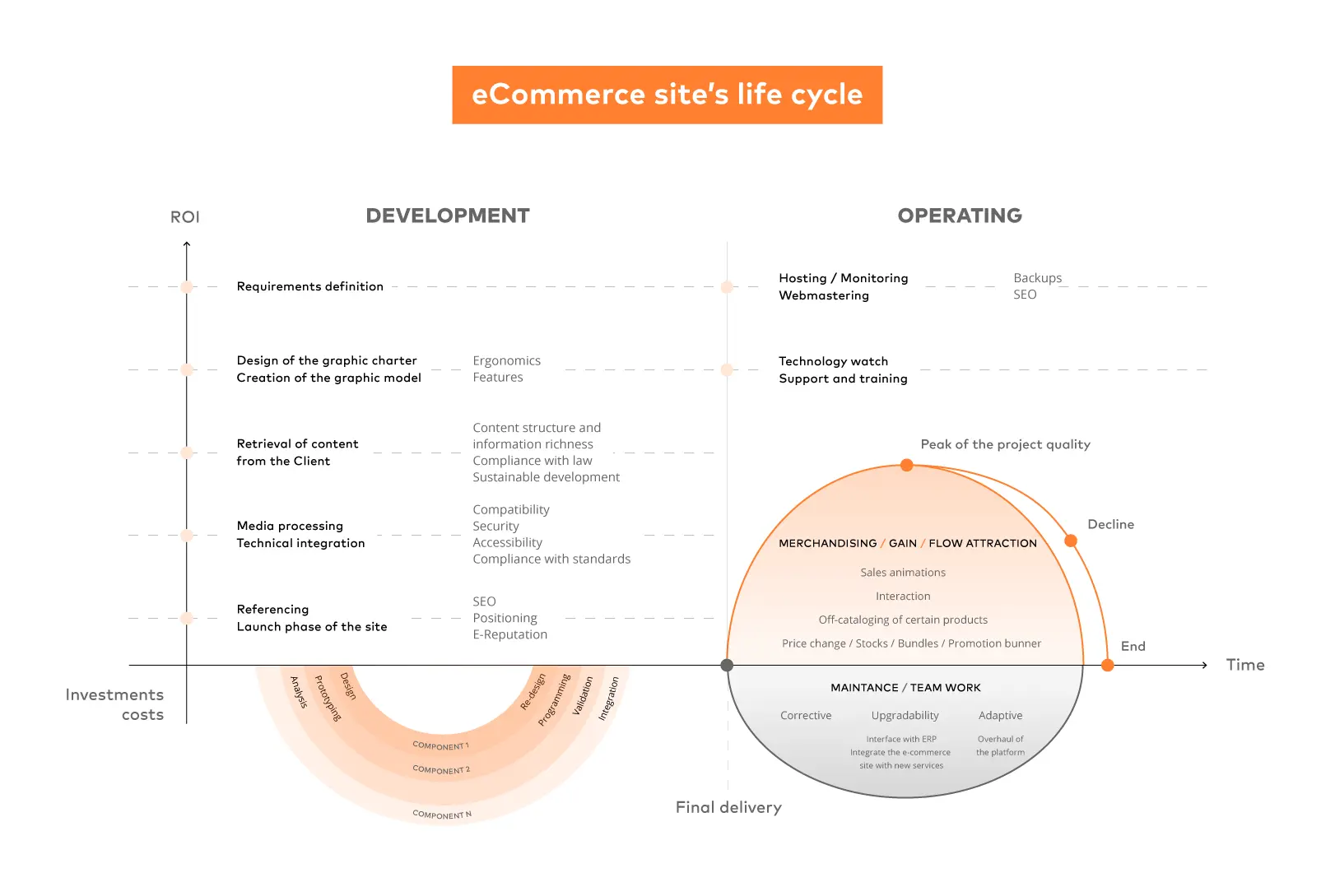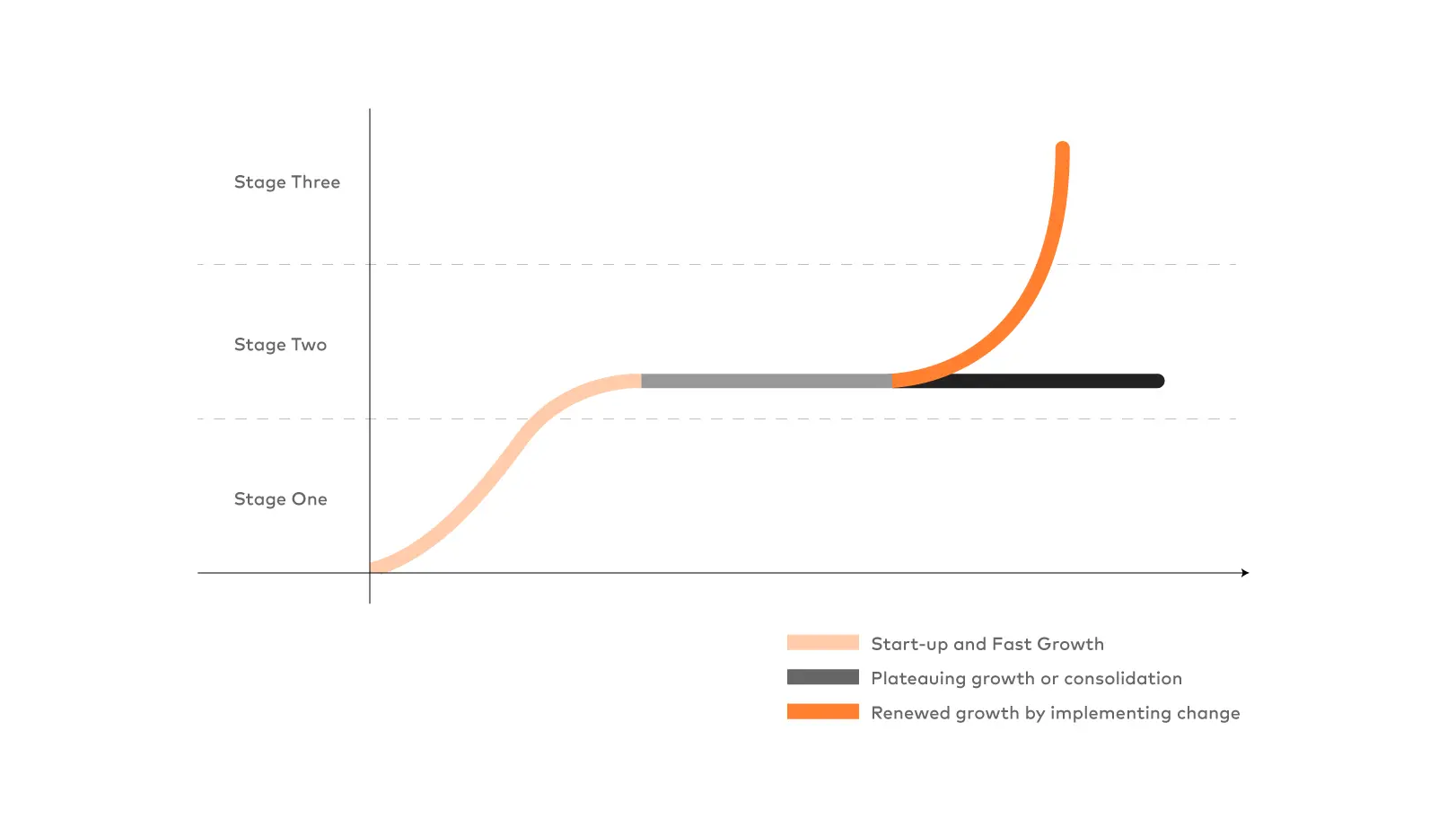The year 2025 will be one where only dynamic and fast-reacting eCommerce platforms, capable of adapting to changes and trends, will have the chance to grow and stand out from the competition.
We’ve updated the e-commerce “health checklist” to include the key elements you need to implement to stay profitable in 2025. However, if you haven’t yet addressed the foundational aspects we discussed earlier, go back to that part of the article. The rule remains the same: if you want to grow and succeed, your e-commerce platform must be accessible to your users and work seamlessly in their natural environments. What do we mean by users’ natural environments? Mobile devices, weak or unstable internet connections, different time zones, varied payment habits, customer support, promotional campaigns, fast website performance, and intuitive purchase paths.
Trends for 2025 -The future of B2C and B2B eCommerce
Below you can find a few important things you should keep in mind while running your eCommerce in 2025.

Social Commerce – Communities with billion-dollar potential
One of the main trends shaping e-commerce will be social commerce—a transformation of social media platforms into active sales channels and full-fledged online marketplaces. Already, features like shoppable posts and reels allow brands to tap into consumers’ tendency for impulsive purchases while scrolling. Social commerce is expected to reach a value of around $6 trillion by 2030.

TikTok shop integration
With TikTok introducing its direct shopping module, eCommerce businesses should integrate their platforms with this channel as soon as possible. This is especially crucial for brands already running marketing campaigns with micro and mid-tier influencers. The launch of TikTok Shop marks the beginning of a new era in increasing purchase conversions through video materials, live broadcasts, and Q&A sessions.
Omnichannel – seamless shopping experiences
Traditionally, omnichannel has been understood as the integration of online, mobile, and offline channels. Today, however, online must also include various traffic sources like social media platforms, marketplaces, and partnerships, alongside offline channels like physical stores, promotional campaigns, and educational events or conferences.
One key aspect of omnichannel strategy will be proper customer service and support. By 2025, support will also include advanced AI solutions to enhance the quality of these processes.
Dynamic pricing strategies and gamification
In the face of growing competition and the ease with which new players can enter the market, pricing strategies will become a crucial tool for many e-commerce companies. Additionally, we will see an increase in gamification solutions designed to provide users with new, positive emotions. This strategy will help businesses achieve higher buyer retention rates without compromising the size of shopping carts.

AI – Don’t forget the human touch
AI is everywhere in eCommerce, and its presence will only grow. However, we want to emphasize that the omnipresence of AI will soon make personal, human customer service a more desirable and highly valued feature than AI assistants.
2025 will be a turning point for eCommerce. Businesses that adapt to emerging trends, integrate cutting-edge solutions, and balance automation with a personal touch will have the best chance to succeed in this competitive sector.
The elimination of weak elements is the first step in scaling
Would you like to increase your eCommerce sales, expand business activities, add new products, and increase the number of Clients you service? These are all natural drives when business is good.
While the urge for scaling and increasing revenue accompanies all business owners, so does each of them face inhibiting factors – conditions that somewhat decrease this enthusiasm. They decelerate an eshop’s rate of development while leaving Clients less loyal.
We often forget that the first step in eCommerce scaling should be the identification of inhibiting factors and their elimination. One of the ways of dealing with business inhibitors is a periodic system analysis and research.
Every brand is different and needs slightly different components to achieve success and stable growth. However, we can distinguish three main stages that most eCommerce businesses go through.

Phase 1: startup and rapid growth
It is often the case that eCommerce growth at this stage is stimulated by accident or product popularity rather than refined structures or technical resources. When starting from nothing, these last two factors are not a problem, only when the platform achieves a certain degree of recognition and repeating interest may we encounter the first inhibiting elements.
At this stage, the inhibiting factors are:
- low system efficiency during high traffic
- lack of effective technical support
- problems with integrating new components (warehouses, payment gateways, logistics)
- site speed, which will be negatively affected by premade plugins
It’s natural that during the first stage we do not concentrate on these difficulties, which is why the second stage is necessary, one that allows for periodic functional-technical “cleaning” that ensures platform flexibility and swift adaptation to market changes.
Phase 2: The normalization of processes for developing plans or reducing operating focus
Phase two is a moment for “regenerating the business” so it is ready for the next development jump. It’s the perfect time to stop for a moment and evaluate the platform in terms of its performance and usefulness. It’s a good thing to conduct a thorough eCommerce audit during this phase to get an authentic picture of the situation and to apply upgrades.
The truth is that many businesses have no influence on global market trends, but every eCommerce owner has 100% influence on how his platform responds to them. We should spend an equal amount of time on analyzing the business environment and on the eShop audit itself.
The most important aspects that should be periodically monitored and audited include:
A system usefulness audit – e.g., evaluating the purchasing process; analyzing Client accounts, transaction emails, purchase and return procedures, statistical data, behavioral data and site availability.
It may turn out that when you began your eCommerce adventure you forgot about collecting the right data. Don’t worry, you’re not the only one. No data is also data. At this stage, you may add more information that will allow you to better understand your business in the future.
The technical audit of the platform – regardless of whether you decided to conduct business activity based on BigCommerce, Shopify, Magento or some custom solution, you should first check if there are no errors on the site and regarding its configuration that have a negative impact on Clients, the brand and the platform’s security audit.
Below we have prepared a list of the most important aspects that we pay attention to during periodic technical reviews of our Clients’ systems based on WooCommerce.
1. Verifying the versions of the plugins and engine
2. Verifying server configuration and the PHP version
3. Verifying the points and recommendations listed in the “site status” page
4. Switching off and removing unnecessary plugins (or replacing them with other plugins or own solutions)
5. Verifying the site using the W3C validator
6. Verifying performance/site speed and the potential for a cache plugin
7. Verifying in terms of security (there are 2 ways here: either formulating recommendations and current threats, or immediately implementing solutions):
- removing unnecessary files and templates
- protecting against SQL injection attacks
- REST API protection
- Protecting the admin panel against brute-force attacks; setting up a limit for possible log-in attempts
- Scanning the site for vulnerabilities
- Verifying server configuration, preventing the browsing of server catalogues from the browser level
- Hiding information about WP and file versions
- Other minor protection activities
8. Verifying whether the template is written in accordance with current guidelines
9. Code audit
SEO audit – For our Clients, we have developed an original system for the evaluation of platform efficiency in terms of SEO. Our reports are always conducted by a specialist, not by generic software. The report features over 40 key onsite SEO parameters, including content guidelines regarding CMS data, aspects of technical SEO, recommendations for the mobile version of the platform and regarding server configuration.
Additionally, throughout the entire time of cooperation with Clients, we constantly check and optimize their sites in terms of keyword saturation. We fill up content gaps, plan specific subsites and product descriptions to ensure there is no cannibalization.
Is the “flat line” period a good or bad time for business? From the development perspective, it’s the best we can have. It’s a time when the conclusions from eCommerce activity during the first stage can be forged into specific activities ensuring growth in the next stage.
Phase 3: Scaling
Scaling doesn’t always have to mean a change in direction (actually, it shouldn’t be associated with it), a complete platform or market shift. Scaling during the first stage should mean the implementation of the conclusions drawn from audits performed during phase 2.
The growth In Phase 3 should be more strategic. Our experience indicates that taking care of the so far ignored areas of platform functionality or the increase of its performance may lead to another growth stage. When you have the knowledge of how Clients behave and where the market is going, it is easier to modify business goals and determine operating strategies.
The constant analysis and monitoring of your own platform, staying up to date with the market show the right ways to follow. It is on this basis that businesses should make decisions about replatforming the entire system.
You can see these phases intertwined in the image below. You can see periodic jumps – after an increased development phase, there is a period of process normalization just to prepare for the next “jump”. The concept was presented for the first time in 2017 by Jon Woodall.

Exiting the theory phase, it is worth remembering that performing audits alone and collecting data will not yield any positive results if the process is not followed by a proper business-technical analysis with steady and agile implementation of changes. This is why whenever we conduct auditing, we make sure we understand the goals of the platform well and that we know the direction the business is going. Aside from a document that clearly specifies the weak, inhibiting factors of your platform, we assign them a degree of importance and priority while indicating the time needed for implementation and the specialists that will be involved in the process. Of course, we can leave the implementation itself on your side if you have your own development, UX and SEO departments. However, our specialists are always ready to aid with counselling and implementation without uncontrolled downtimes.















